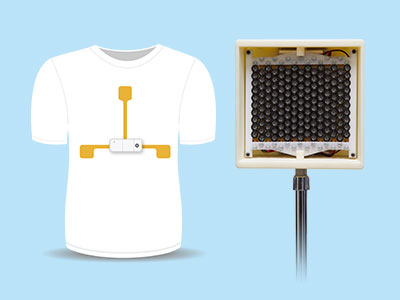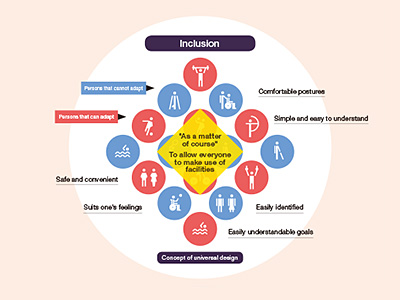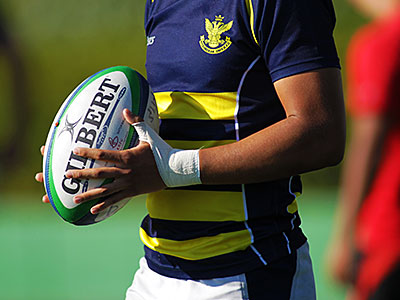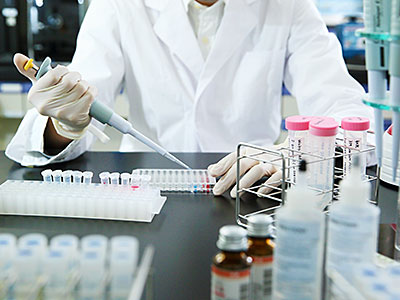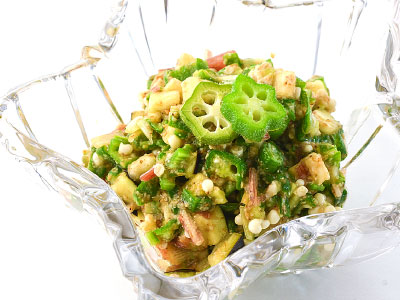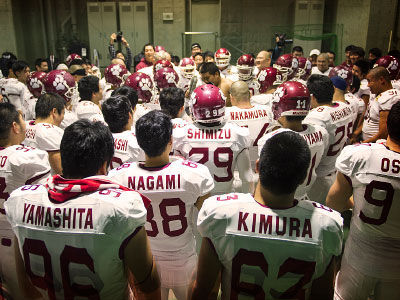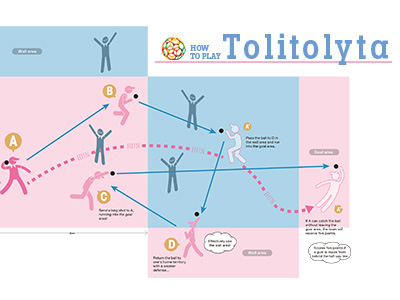STORY #8
"Eating program"
for the development of
local junior athletes
Kumiko Ebi
Professor, College of Sport and Health Science
Growing athletes requires nutritional support in individual local communities
"I want to ensure that food that aids physical activity is delicious," says Kumiko Ebi, explaining the objective of her study. She not only studies "food" for growing young athletes in local communities but also contributes to the development of young athletes through nutritional support to incorporate the concept of "local production for local consumption."
As a registered dietitian, Ebi has supported top Japanese athletes via "food" by, for example, taking charge of nutritional support for JOC-certified athletes at the Beijing Olympics. In the process, she renewed her awareness of the reality that most young athletes that will become the future of Japanese sports grow up in an environment without sufficient nutritional support. "It is young athletes in the middle of the process of building up their bodies that most require nutritional support." She has been continually searching for methods to enable stable nutritional support for young athletes in local communities.
"The daily nutrition of young athletes really depends on not only the athletes themselves but also on the support of coaches and families, etc.," Ebi says. To change the dietary environment for young athletes in local communities, she launched the Society to Promote Food and Sports ("Shokusupo") in 2010, in which teachers instructing physical education and extracurricular activities at junior and senior high schools, mainly in Shiga Prefecture and Kyoto Prefecture, voluntarily get together, and she has been supporting the society's activities since that time. At Shokusupo, the leaders present the reality and problems of their teams and clubs, while Ebi and graduate school students certified as registered dietitians provide nutritional instructions and advice. The aim is to disseminate the importance of "food" to local communities by gathering leaders with many achievements and broad influence from various schools and by having them play a pivotal role.
Starting out as a part of a research project at Ebi's laboratory, nutritional education provided to a Women's Softball Club at Hieizan High School in Shiga Prefecture turned out to be one of the successful cases. Under instructions from graduate students that are registered dietitians, players set individual targets such as an increase of muscle and the lowering of body fat percentage, and tried to improve their meals or eating habits. As a result, their attitudes toward eating, not to mention their physiques, changed. Ebi says, "As players communicated the nutritional instructions they received at school to their families, indirect intervention effects were a success." This is a good example where a virtuous circle was created where efforts toward "food" starting with leaders were handed down to athletes and then finally their families.
Shokusupo also concentrates on young leaders. "When leaders suggest dietary improvements to athletes, they face many difficulties, such as their own lack of knowledge or having to deal with the athletes' parents. To handle this, once a year an 'extended study meeting for leaders' is held to respond to such concerns."
Six years have already passed since Ebi started this initiative, and the number of participants in Shokusupo has increased every year. The range of nutritional guidance has been expanding to sports clubs at junior and senior high schools.
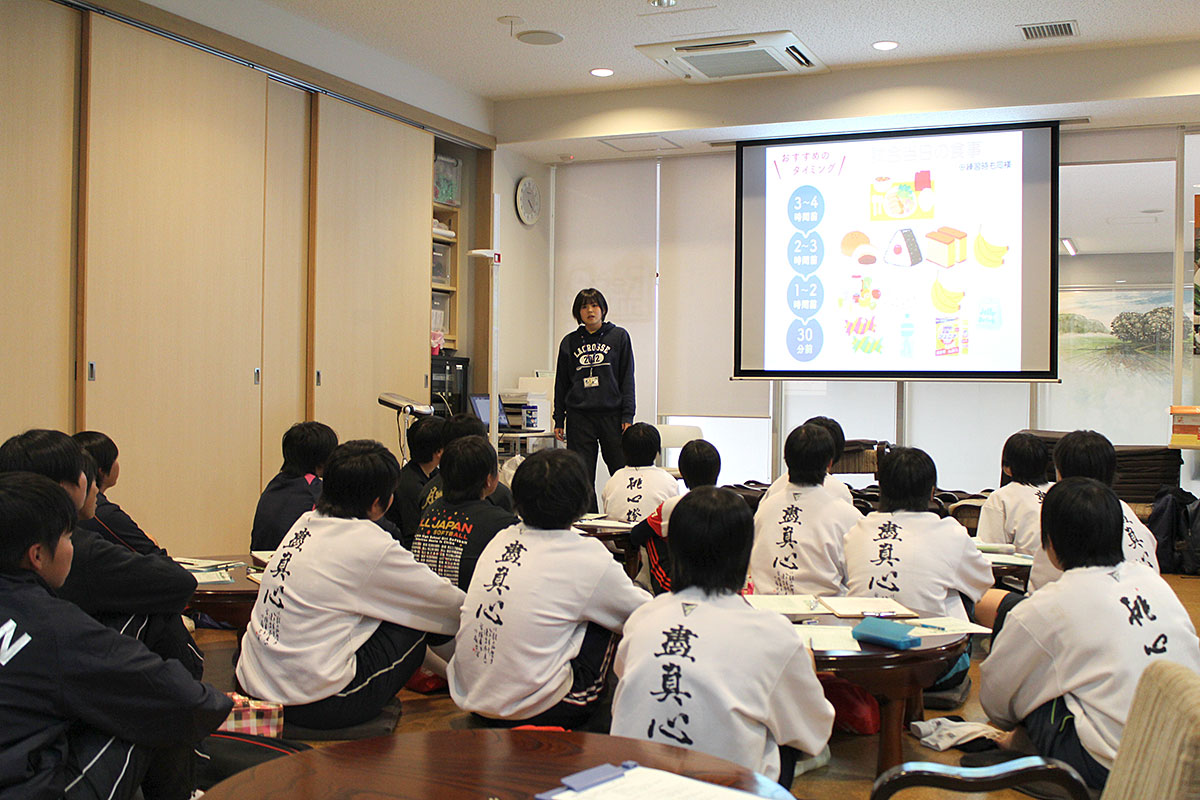
Lecture at the Women’s Softball Club, Hieizan High School
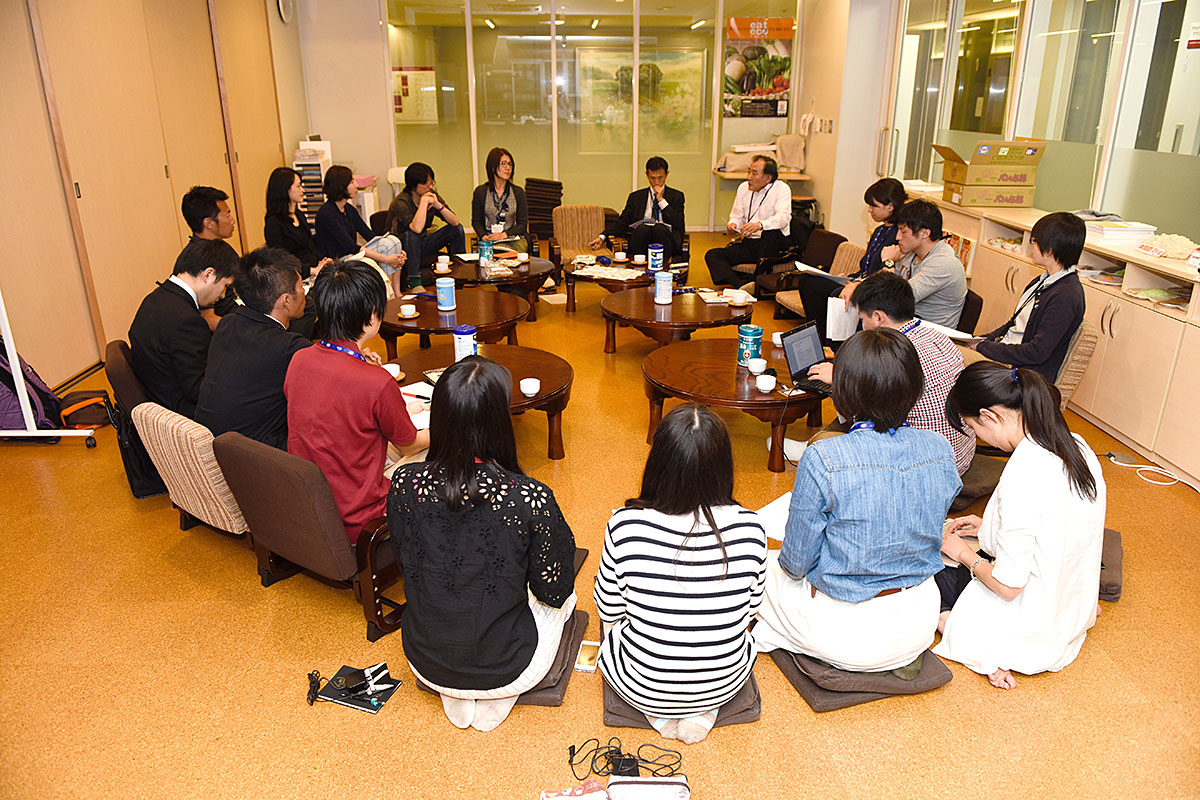
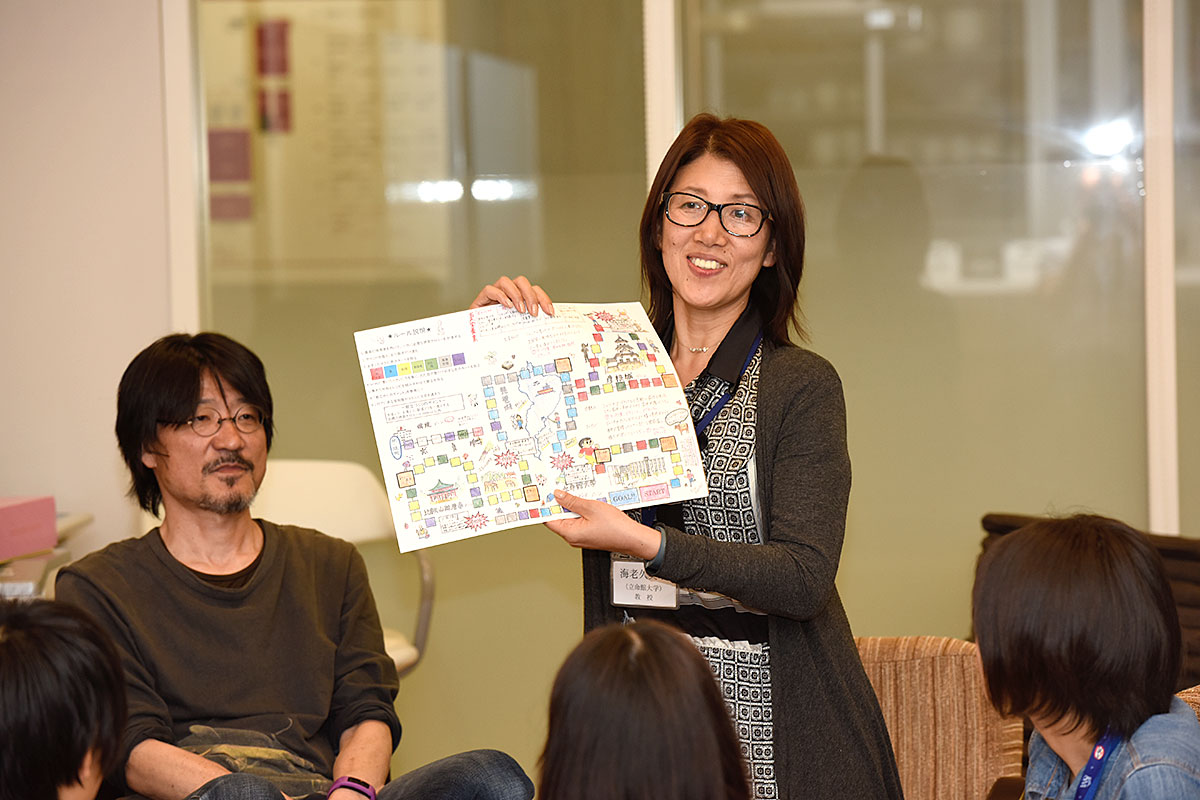
Society to Promote Food and Sports, involving teachers instructing physical education and extracurricular activities at junior and senior high schools, mainly in Shiga Prefecture and Kyoto Prefecture
Among her initiatives, Ebi is also focusing on changing dietary environments for young athletes in local communities as nutritional support for junior high school students and female athletes.
For junior high school students undergoing drastic physical and mental changes amid the development of secondary sexual characteristics (puberty), "food" has a very important meaning. Ebi hopes that they can become able to think about "food" so as to improve their bodies by themselves. The graduate students involved also devised a tool that can serve as a start. "Sports nutrition sugoroku" enables athletes to gain knowledge on sports nutrition and the food materials that are available in their community. They are currently creating this system with the target of distributing it to all junior high school students in Shiga Prefecture.
In addition, young female athletes tend to have serious issues about food. Female athletes in their teens and 20s often display "Female Athlete Triad," in which low energy ingestion results in irregular menstruation or lowered bone density. "Competitiveness can increase when eating properly and following proper nutrition, but quite a number of female athletes reduce their intake of food, believing that they cannot improve their times or records if they are fat," Ebi says.
In addition, Ebi is concerned about the decreasing number of female students joining sports clubs. "The number of female students who are thin because they neither exercise nor eat properly is increasing, but surely such women can grow into adults that can play an active role in society?" Ebi worries about this and is hoping that a solution of sorts will appear, and has thus devised recipes to increase the nutritional intake of young women who enjoy eating and exercising. She also published a book, Joshibukatsushoku (Food for Female Athletes).
Some graduate students who studied sports nutrition have started a career in nutritional support for future Olympic athletes, much like Ebi did. "I feel that one of my main achievements in these six years is that I could help my graduate students—who once supported young athletes in their local communities—to develop into diet and nutrition support providers for world-class athletes," Ebi says.
Ebi is also engaged in training sports dietitians. Her efforts are sure to lead to the development of not only athletes that can support the future of sports but also the human resources to support these athletes.
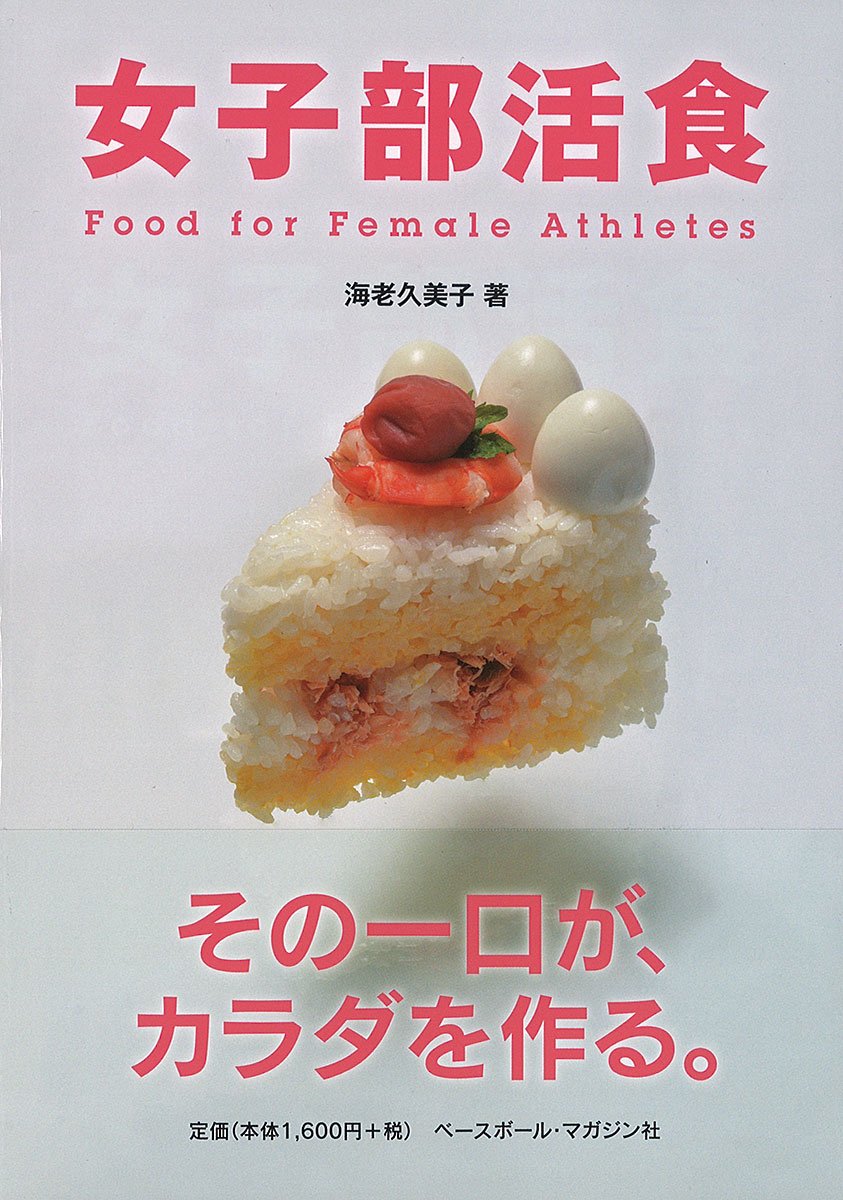
Kumiko Ebi, Joshibukatsushoku (Food for Female Athletes), published by Baseball Magazine Sha
Focusing on proper nutrition for female athletes and promoting cooking by oneself, this book features many recipes that can help support female athleticism. Here are some recipes from it.
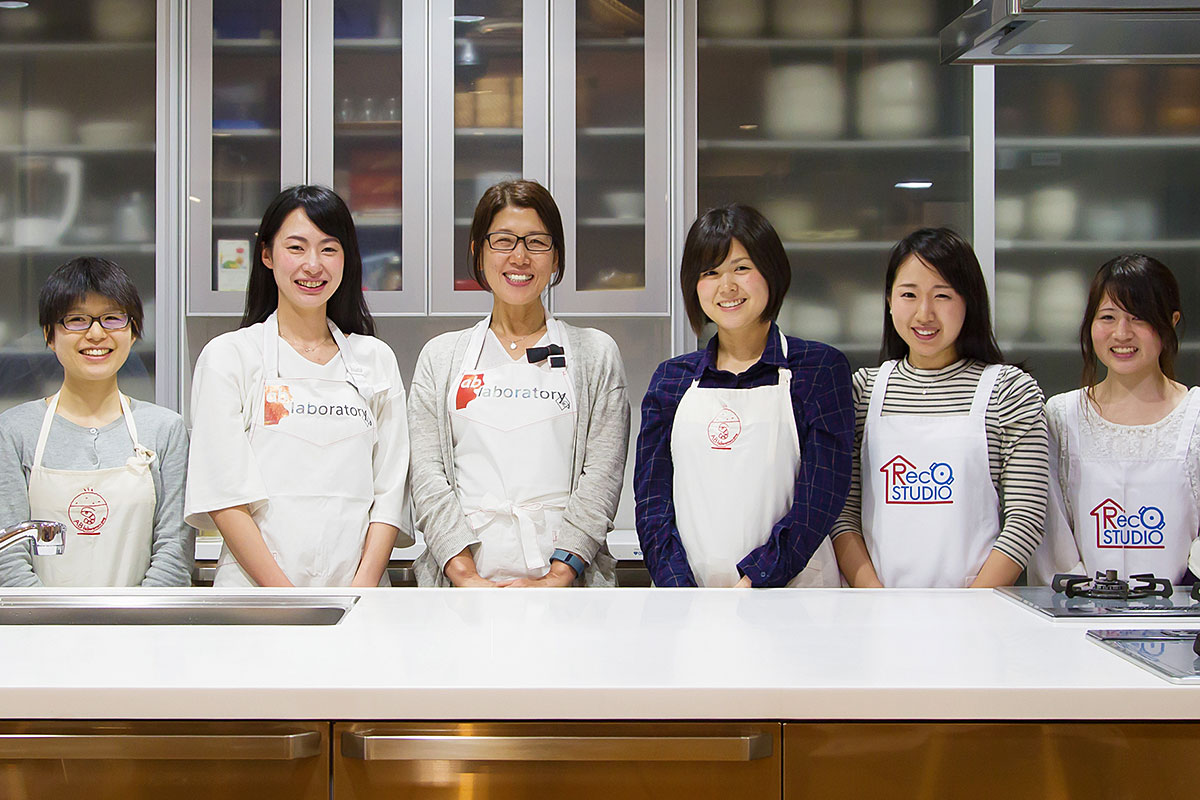
Kumiko Ebi
Professor, College of Sport and Health Science
Subject of Research: Research on the effects of nutritional support and food education
Research Keywords: Sports Nutrition, Nutrition Science, Young Athletes, Dietary Education, Nutrition Education
Photograph: Members of the Ebi laboratory; from left: Yuka Shudo, Aya Kaizaki, Kumiko Ebi, Yukako Murakami, Nanako Nakayama, and Chika Kondo
Recipe
Recommended recipes from Joshibukatsushoku
(Food for Female Athletes)
(Kumiko Ebi, Baseball Magazine Sha).
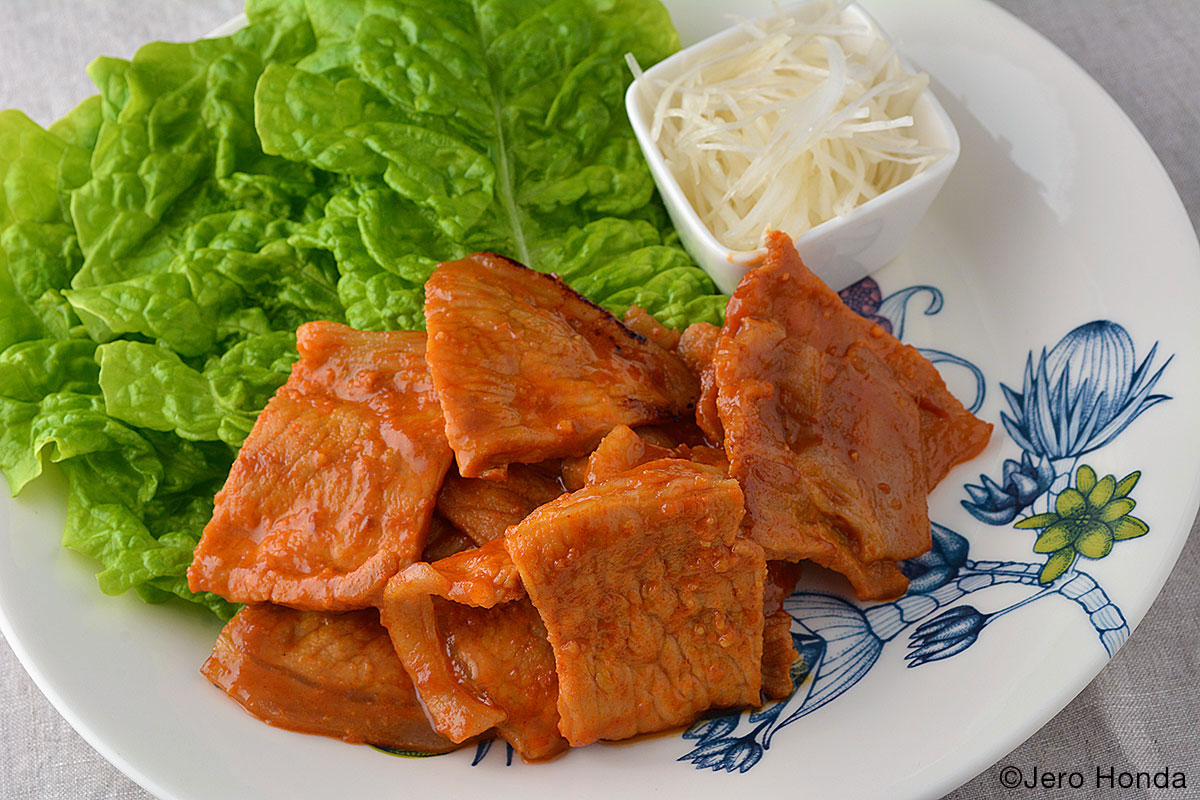
You are sure to eat too much rice! Try
Stir-fry pork with gochujang
Ingredients (for one serving)
- 150 g pork loin (thinly sliced)
- 20 g Korean lettuce
- 10 g white part of a naga-negi onion
- [Marinade]
Directions
- Mix the ingredients for the marinade and soak the pork loins in the marinade for 30 minutes to one hour.
- Thinly slice the white part of the naga-negi onion into fine strips.
- Remove some of the sauce from the pork (1) and cook it in a heated frying pan.
- Complete by arranging the Korean lettuce, naga-negi onion, and pork. Wrap the naga-negi onion and pork in the Korean lettuce. (Normal lettuce can be used as a substitute.)
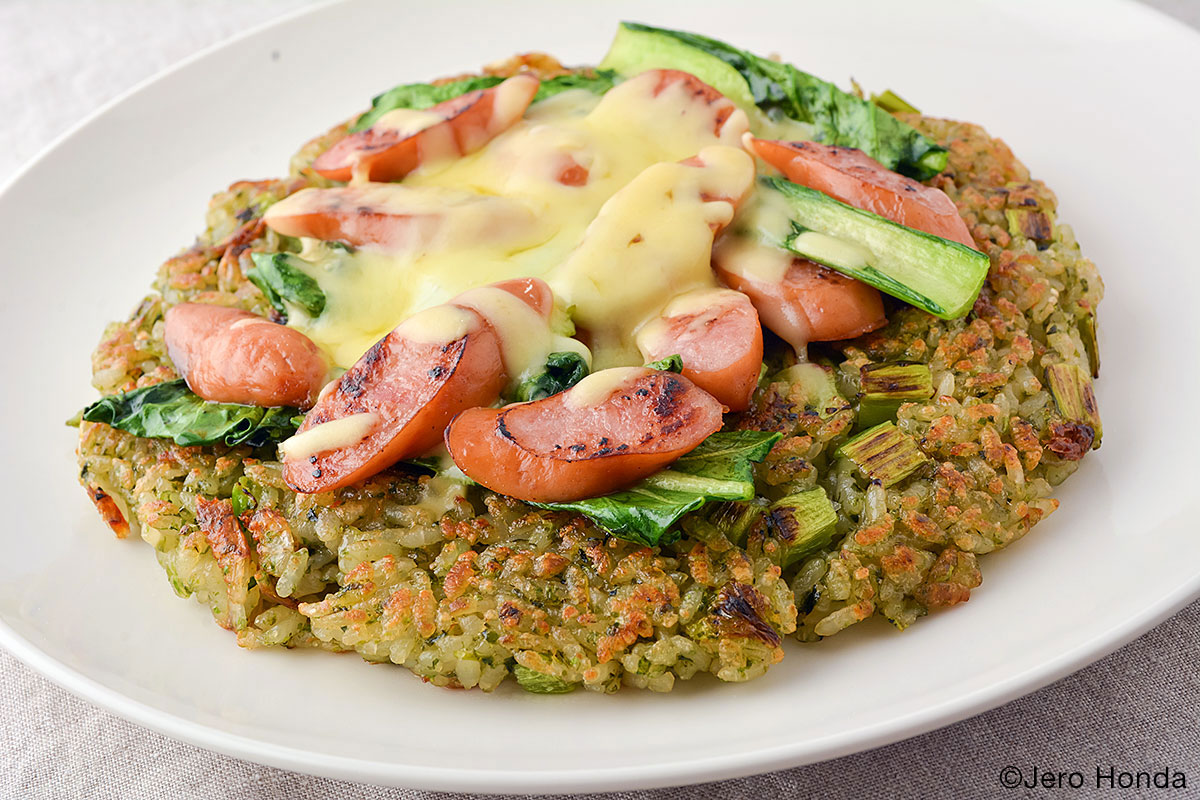
A supply of calcium with a staple food:
Rice pizza with dried sakura shrimp and komatsuna (Japanese spinach)
Ingredients (for one serving)
- 200 g boiled rice
- 40 g komatsuna (Japanese spinach)
- 2 (100 g) Vienna sausages
- 1 tablespoon of aonori (green laver)
- 4 g dried sakura shrimp
- 1 tablespoon of light soy sauce
- 1 teaspoon of potato flour (katakuriko)
- 1 teaspoon of olive oil
- 20 g cheese
Directions
- Cut the stalks of the komatsuna (Japanese spinach) into pieces, and mix them into the boiled rice. Cut the spinach leaf into pieces 3 to 4 cm in length. Thinly slice the Vienna sausages. Put the rice into a plastic bag, and mix in the aonori, dried sakura shrimps, light soy sauce, and potato flour, while smashing the rice grains.
- Fry the komatsuna leaf and sausages in a frying pan.
- Mold the rice (1) flatly, coat a frying pan with olive oil, and fry until both sides of the rice are slightly brown.
- When both sides are fried, set the spinach leaf and sausages (2) onto the rice, complete by adding cheese.
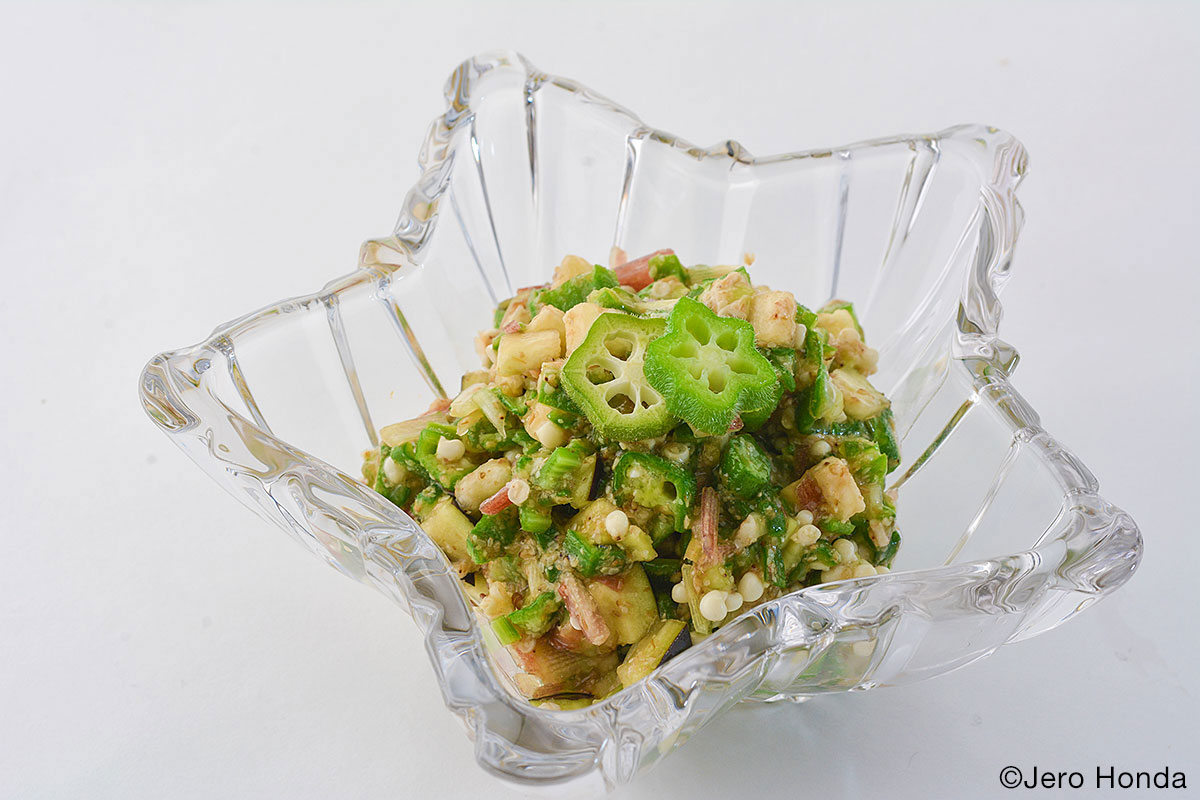
An ideal match for rice and tofu:
Okra stock
Ingredients (Amount to prepare at a time: 1/2 for one serving)
- 150 g okra
- 50 g Japanese wild ginger
- 100 g eggplant
- Handful of dried bonito flakes
- 3 tablespoons of mentsuyu noodle soup
- 20 g ground sesame
Directions
- Cut eggplants in half lengthwise, and then thinly slice them into half-moon-shaped pieces. Soak them in salted water to remove astringent taste.
- Boil the okras briefly in boiling water. Then, soak them in cold water.
- Remove the wetness from the okras. Cut them into round slices. Cut the Japanese wild ginger into thin slices.
- Mix the eggplant, okras and Japanese wild ginger with the dried bonito flakes, mentsuyu noodle soup, and ground sesame.
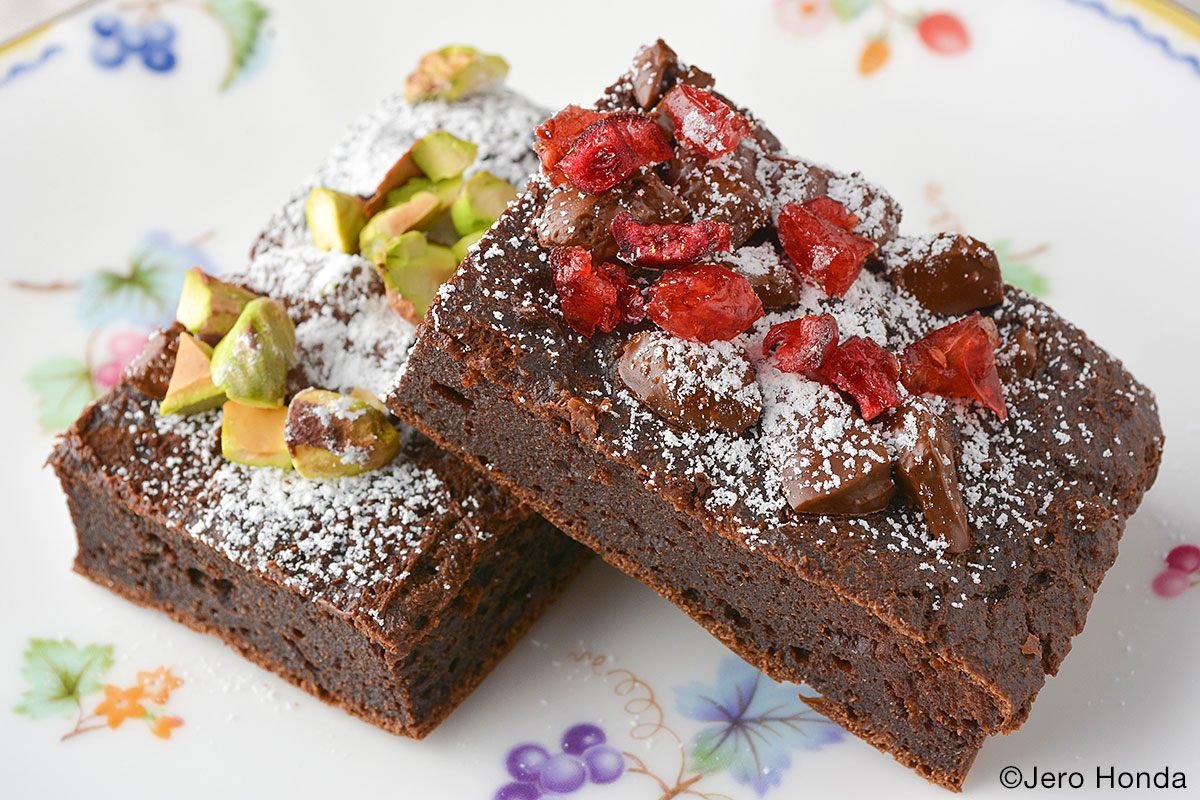
Adding healthy minerals via something sweet:
Double tofu brownies
Ingredients (For 6 servings: 1 serving as one meal)
- 1/2 cake of "silken" tofu (150 g)
- 30 g cake flour
- 20 g cocoa powder
- 30 g sugar
- 1 egg
- 2 pieces of freeze-dried tofu
- 2.5 g baking powder
- 20 g chocolate (broken into small pieces)
- 10 g cranberries
- 10 g pistachio nuts
Directions
- Preheat oven to 180°C. Grind the freeze-dried tofu.
- Mix together the cocoa powder, sugar, egg, "silken" tofu, ground freeze-dried tofu, baking powder, and cake flour.
- Place the dough on a baking sheet with waxed paper and flatten it out. Sprinkle on the chocolate pieces and bake for 30 minutes in an oven pre-heated to 180°C.
- Arrange the brownies on a plate and garnish them with cranberries and/or pistachio nuts.

